On the evening of Thursday, 29 June 1972, the Solemnity of Saints Peter and Paul, in the presence of a considerable multitude of the faithful coming from every part of the world, the Holy Father celebrated the Mass and the beginning of the tenth year of his Pontificate as the successor of Saint Peter.
In His Homily referring to the situation of the Church today, the Holy Father affirms that he has a sense that “from some fissure the smoke of Satan has entered the temple of God.”
How many Catholics have encountered this statement from Pope Paul VI from 1972 and taken the time to think about it, or perhaps we should ask how many priests meditate on it? Let us go little further, how many professors in seminaries refer to this during their classes? Only God knows.
I’m sure that I have never heard a sermon touching this subject nor was it mentioned in my private conversations. The Smoke of Satan is in the temple of God, in the Catholic Church, and nobody is paying any attention to it. The Pope is talking and nobody listens, the Church is under attack, there are casualties and yet nobody is fighting back?
In his homily the Holy Father points at the already visible fruits of the influence of evil forces in the Church. “There is doubt, incertitude, problematic, disquiet, dissatisfaction, confrontation. There is no longer trust of the Church; they trust the first profane prophet who speaks in some journal or some social movement, and they run after him and ask him if he has the formula of true life. And we are not alert to the fact that we are already the owners and masters of the formula of true life. Doubt has entered our consciences, and it entered by windows that should have been open to the light.”
“There is no longer trust of the Church,” and “Doubt has entered our consciences, and it entered by windows that should have been open to the light.” are two key sentences in the Holy Father’s statement to identify the problem.
Trust is a fruit of virtues like reliability and honesty. It is easier to gain trust than lose it. Opinions of a third party may be enough to gain somebody’s trust, but to lose trust, most of the time rumors are not enough; someone who has already gained trust must himself do something to lose it.
The Holy Spirit through Pope Paul VI is showing us where the problem lies, “Doubt has entered our consciences, and it entered by windows that should have been open to the light.”
A window separates the outside and inside world, allowing natural light to come in. Windows with high quality glass will allow a large amount of light to enter the room, and will allow us to clearly see images through them. Muddy glass will limit not just the brightness of light, but will limit our ability to see clearly thus creating false images. In spiritual life the window between man and God is the Catholic Church, with its teachings.
The Smoke of the devil is distorting the teachings of the Church.
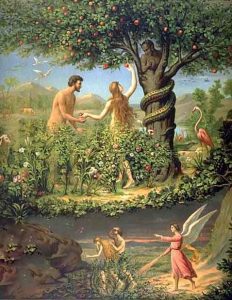 Satan and Sin
Satan and Sin
(smoke of Satan – part 1)
Let us start this series of reflections with the devil himself.
Fr. Bill Casey, a few years back during a conference in Bloomington, IN on spiritual combat “The Devil: Liar and Murderer,” ask the audience the question “How many of you have ever heard Sunday homily in your home parish on the devil?” The answer was none.
Cardinal Joseph Ratzinger, Prefect of the Congregation for the Doctrine of the Faith, wrote in the Ratzinger Report: “Whatever the less discerning theologians may say, the devil, as far as Christian belief is concerned, is a puzzling but real, personal and not merely symbolical presence,”… “He is a powerful reality (the ‘prince of this world,’ as he is called by the New Testament, which continually reminds us of his existence), a baneful superhuman freedom directed against God’s freedom. This is evident if we look realistically at history, with its abyss of ever-new atrocities which cannot be explained by reference to man alone.”
Through the history of the Catholic Church evil spirits and their ability to influence man were always treated seriously.
In the Old Testament we read about the devil portrayed as a snake in the book of Genesis, under the devil’s influence King David had a census, and the devil is present in the book of Job. The Gospel is full of stories where Our Lord casts evil spirits away. In Luke 4:40-41 it is written; “At sunset, all who had people sick with various diseases brought them to him. He laid his hands on each of them and cured them. And demons also came out from many…” Luke 11:14 “He was driving the demon [that was] mute, and when the demon had gone out, the mute person spoke…” Worthy of reminder is the second temptation of our Lord in Matthew 16:23, were Satan uses Peter to tempt Jesus, and Our Lord said “Get behind me, Satan!”
These are just several example of many showing the great variety of powers the demons can exercise over people.
St. Peter in his first letter 5, 8-9 writes: “Be sober and vigilant. Your opponent the devil is prowling around like a roaring lion looking for someone to devour. Resist him, steadfast in faith, knowing that your fellow believers throughout the world undergo the same sufferings.”
St. Paul in his letter to the Ephesians 6, 12 explains: “For our struggle is not with flesh and blood but with the principalities, with the powers, with the world rulers of this present darkness, with the evil spirits in the high places.”
There is no Saint who would deny the existence and influence of evil spirits on mankind, all of them have experience its attack.
In St. John Vianney’s sermon – “WE MUST EXPECT TEMPTATION” we read: “’It is most unfortunate for ourselves if we do not know that we are tempted in almost all our actions, at one time by pride, by vanity, by the good opinion which we think people should have of us, at another by jealousy, by hatred and by revenge. At other times, the Devil comes to us with the foulest and most impure images… And even more, since the time of Adam, you will not find a saint who has not been tempted – some in one way, some in another – and the greatest saints are those who have been tempted the most. If Our Lord was tempted, it was in order to show us that we must be also.’ It follows, therefore, that we must expect temptation. If you ask me what is the cause of our temptations, I shall tell you that it is the beauty and the great worth and importance of our souls which the Devil values and which he loves so much that he would consent to suffer two Hells, if necessary, if by so doing he could drag our souls into Hell.”
In The Imitation of Christ book 1 chapter XIII the mystic Thomas a Kempis writes:
“So long as we live in the world, we cannot be without trouble and trial. Wherefore it is written in Job, The life of man upon the earth is a trial. And therefore ought each of us to give heed concerning trials and temptations, and watch unto prayer, lest the devil find occasion to deceive; for he never sleepeth, but goeth about seeking whom he may devour.”
In book 3 chapter VI
“Know thou that thine old enemy altogether striveth to hinder thy pursuit after good, and to deter thee from every godly exercise, to wit, the contemplation of the Saints, the pious remembrance of My passion, the profitable recollection of sin, the keeping of thy own heart, and the steadfast purpose to grow in virtue. He suggested to thee many evil thoughts, that he may work in thee weariness and terror, and so draw thee away from prayer and holy reading. Humble confession displeaseth him, and if he were able he would make thee to cease from Communion.”
And in chapter XV of the same book we are reading: “For not every desire is from the Holy Ghost, although it appear to a man right and good.”
St. Francis tells us that one day God allowed him to see the way in which the Devil tempted his religious, especially in matters of purity. He allowed him to see a band of devils who did nothing but shoot their arrows against his religious.
St. Padre Pio once said: “If all the devils that are here were to take bodily form, they would block out the light of the sun!”
These statements are consistent with testimonies of priests’ exorcists.
In one of Cardinal Joseph Ratzinger most celebrated books, Dogma und Verkundigund, we will find that the topic of the devil should be one of the “major themes of preaching.”
Sadly in many sermons and occasions we are told that our body, human nature etc. makes us sin. A certain highly respected professor of a seminary when asked “what makes people evil?” said “it is sin that makes people evil.” A person commits a sin, then this sin leads to the next and eventually it make him evil. The Devil was never mentioned in his explanation, because “evil is not being, bur absence of being.”
This approach is more and more common. Matthew 15: 19 is used to support the no devil theory: “For from the heart come evil thoughts, murder, adultery, unchastity, theft, false witness, blasphemy.”
At the same time they overlook Matthew 13:24-25: “He proposed another parable to them. “The kingdom of heaven may be likened to a man who sowed good seed in his field. While everyone was asleep his enemy came and sowed weeds all through the wheat, and then went off.”
Is it possible that God put the human soul, a soul of great beauty and great worth into an evil body with evil heart, giving it an evil nature? Nobody is born evil, but from the moment of our birth we are under the constant influence of evil spirits, that is why it is extremely important that we live in and raise our kids in a good, Godly environment.
In Preparation for Death –consideration XXXI –- Saint Alphonsus Maria De Liguori is calling wicked companions “ministers of Lucifer “ and pointing out the importance of avoiding the occasion of sin by quoting confessions of the devil:
“Being compelled by exorcisms the devil once confessed that of all sermons, that which displeased him most was the sermon on avoiding the occasions of sin: and justly; for the devil laughs at all the resolutions and promises of penitent sinners who remain in the occasion of sin.”
Only if we recognize that every sin committed by humans one way or another is inspired by the devil, then we may understand the reason why God gave us a second chance. Only in this context does redemption through the sacrifice of Our Lord Jesus Christ, His plea “Father, forgive them, they know not what they do,” (Luke 23:34) redemption in the sacrament of penance and the existence of Catholic Church make sense.
In The message of Jesus to the priests, through Ottavio Michelini, Our Lord says:
“A huge mistake of the modern pastoral care is that it does not explain clearly the problem of the Church and of Christian life: God, the Supreme Good! Satan, the Evil! And between them, the man who is the subject of constant struggle.”
Pope Benedict once said: “The devil does not simply stand for ‘sin’; he is not a mere symbol or image; an approach of denial is one authored by Satan himself.”
It is extremely important to clean up the teachings of the Church from the smoke of the devil to avoid creating confusion and to rebuild trust. It is the duty of every Catholic.
To be continued.
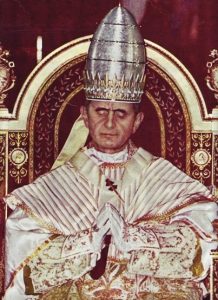
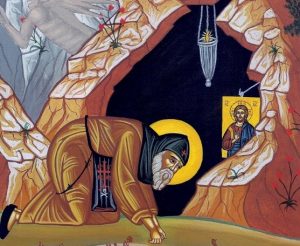 Saint Ephrem the Syrian
Saint Ephrem the Syrian Saint Bede the Venerable
Saint Bede the Venerable You know the word [that] He sent to the Israelites as He proclaimed peace through Jesus Christ, who is Lord of all, what has happened all over Judea, beginning in Galilee after the baptism that John preached, how God anointed Jesus of Nazareth with the holy Spirit and power. He went about doing good and healing all those oppressed by the devil, for God was with Him. (Acts 10:36-38)
You know the word [that] He sent to the Israelites as He proclaimed peace through Jesus Christ, who is Lord of all, what has happened all over Judea, beginning in Galilee after the baptism that John preached, how God anointed Jesus of Nazareth with the holy Spirit and power. He went about doing good and healing all those oppressed by the devil, for God was with Him. (Acts 10:36-38)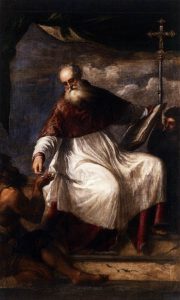 Saint John the Almsgiver
Saint John the Almsgiver regory the Great
regory the Great Saint Romuald
Saint Romuald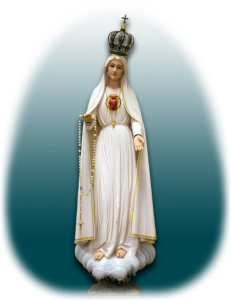 said: Let us make human beings in our image, after our likeness. Let them have dominion over the fish of the sea, the birds of the air, the tame animals, all the wild animals, and all the creatures that crawl on the earth. God created mankind in his image; in the image of God he created them; male and female he created them.God blessed them and God said to them: Be fertile and multiply; fill the earth and subdue it. Have dominion over the fish of the sea, the birds of the air, and all the living things that crawl on the earth.
said: Let us make human beings in our image, after our likeness. Let them have dominion over the fish of the sea, the birds of the air, the tame animals, all the wild animals, and all the creatures that crawl on the earth. God created mankind in his image; in the image of God he created them; male and female he created them.God blessed them and God said to them: Be fertile and multiply; fill the earth and subdue it. Have dominion over the fish of the sea, the birds of the air, and all the living things that crawl on the earth.  Saint Peter Nolasco
Saint Peter Nolasco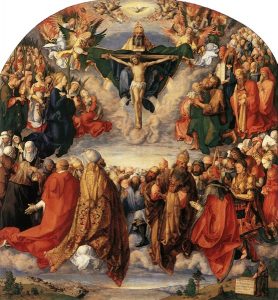 that you are one God in three divine Persons, Father, Son, and Holy Spirit. I believe that your divine Son became man and died for our sins and that he will come to judge the living and the dead. I believe these and all the truths which the Holy Catholic Church teaches because you have revealed them who are eternal truth and wisdom, who can neither deceive nor be deceived. In this faith I intend to live and die. Amen.
that you are one God in three divine Persons, Father, Son, and Holy Spirit. I believe that your divine Son became man and died for our sins and that he will come to judge the living and the dead. I believe these and all the truths which the Holy Catholic Church teaches because you have revealed them who are eternal truth and wisdom, who can neither deceive nor be deceived. In this faith I intend to live and die. Amen.